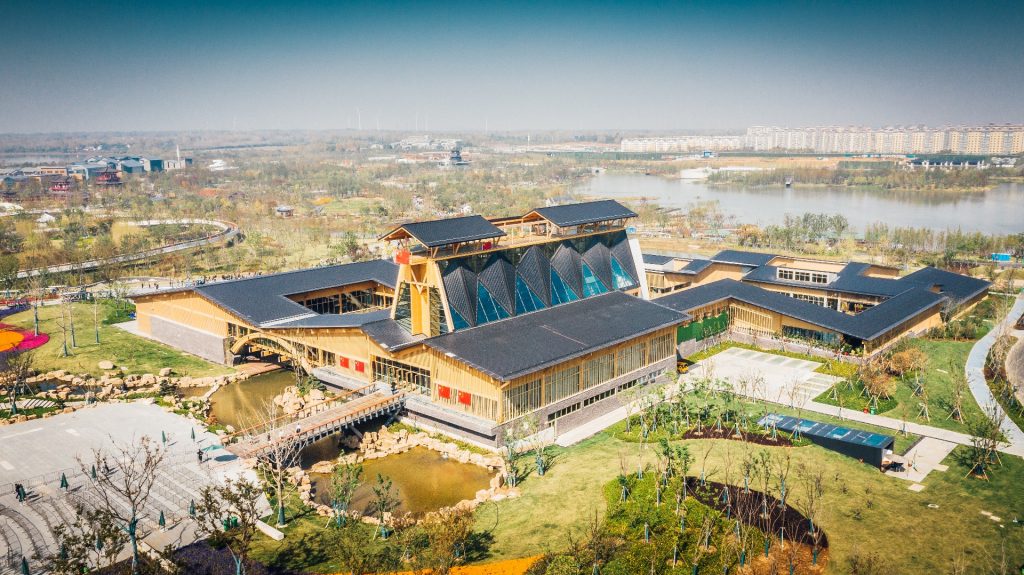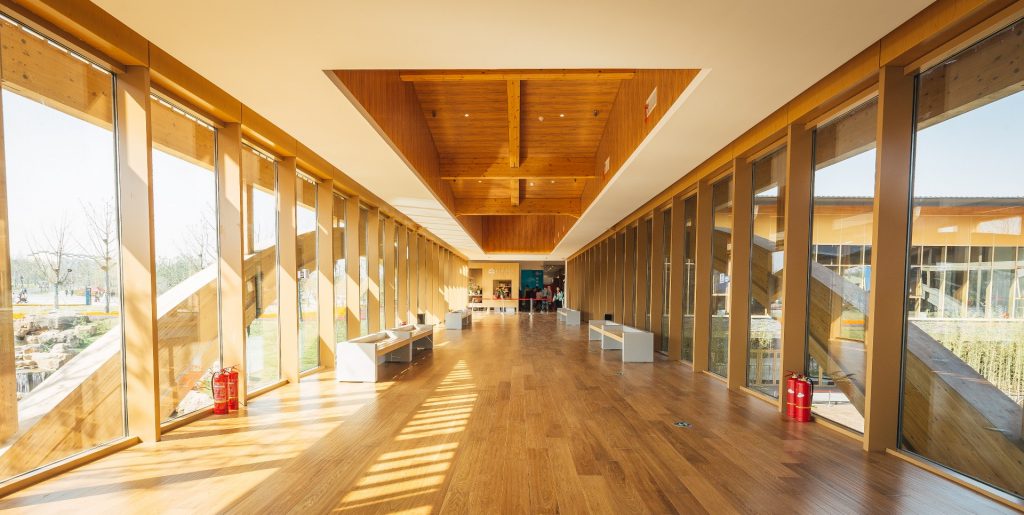Wood Projects Won 2020 China National Green Building Innovation Prize
On April 8, 2021, the Ministry of Housing and Urban-Rural Development of China (MOHURD) released the results of the 2020 National Green Building Innovation Prize. The prizes are awarded to projects that meet the criteria for each category, which means there can be multiple winners of the first, second and third level prizes. From a total of 61 projects, two wood projects won the first and second prizes respectively. The National Green Building Innovation Prize was initiated by MOHURD in 2005, to award those with pioneering and outstanding projects that contribute to China’s green building development. Green building development has been a significant focus for the Chinese government, and this prize was created to incentivize innovation and promote energy efficiency, environmental protection, waste reduction and sustainable practices in the construction industry. The prize is awarded every two years, with the evaluation criteria mainly focused on safety, durability, health, comfort, convenience, energy saving, and environmental protection. Considerations are given for the use of innovative technologies, improved project management, and other benefits for economic and environmental considerations. It is important that projects demonstrate new practices in these areas in a way that can be replicated across China.
Among the 16 winners for the first-prize category, the wood project is the main pavilion of the 10th Jiangsu Horticultural Exposition, which was completed in 2018. Measuring 13,750 m2 with wood elements accounting for 4750 m2 of the total space, the pavilion is in Yangzhou city in the province of Jiangsu. The design team was the Southeast University and Nanjing Tech University, led by Mr. Wang Jianguo, a senior fellow from the Chinese Academy of Engineering. Crownhomes worked as the construction team, and they used scotch pine as the core material with SPF used in joists.
The project received support from the Jiangsu MOHURD provincial branch and they were involved as a local partner in the project. The prize is overseen by the national bureau of MOHURD, which permits support from local branches at provincial and municipal levels as they are not involved in the final selection process.

Haikou Citizen & Visitor Centre 
Haikou Citizen & Visitor Centre 
Haikou Citizen & Visitor Centre
The second wood project is the Haikou Citizen & Visitor Centre in Hainan province, which is an important region recently designated as a free trade port for China. This project was one of the 20 winners for second-prize projects. The project was led by Mr. Cui Kai, also a senior fellow from Chinese Academy of Engineering, with China Architecture Design & Research Group as the design team and Shanghai SKF Builder as the wood construction company.
The project is designed as a multi-function center, with an urban planning exhibition hall, municipal affairs service centre and visitor centre, with the construction area of 29,800m2. The most distinctive element of the project is the 350,000 pieces of western red cedar used on the roofing, which accounts for a total area of 9000m2, making it the largest wood roof in Asia.
In addition to these two projects, it is also notable that the R & D Centre of the Heibei Building Science of Research Institute was the first wood project to be awarded the prize in 2017 since 2005. This project was developed in partnership with Canada Wood China and BC Forest Innovation Investment as a demonstration project for wood frame construction. The R & D Centre is a four-story wood project with an area of 5500 m2, supplemented with low-carbon and energy-saving technologies.




Hebei Building Science R&D Centre
These two outstanding wood projects mark a significant accomplishment with wood projects being recognized in two consecutive rounds of the national prize as the 2019 awards were postponed to 2020 due to COVID-19. The recognition of these high-profile awards helps to raise awareness for the application of wood materials in construction. It is predicted that wood projects will have more opportunities ahead, with China’s pursuit of green building development with greater emphasis on carbon neutrality targets.













